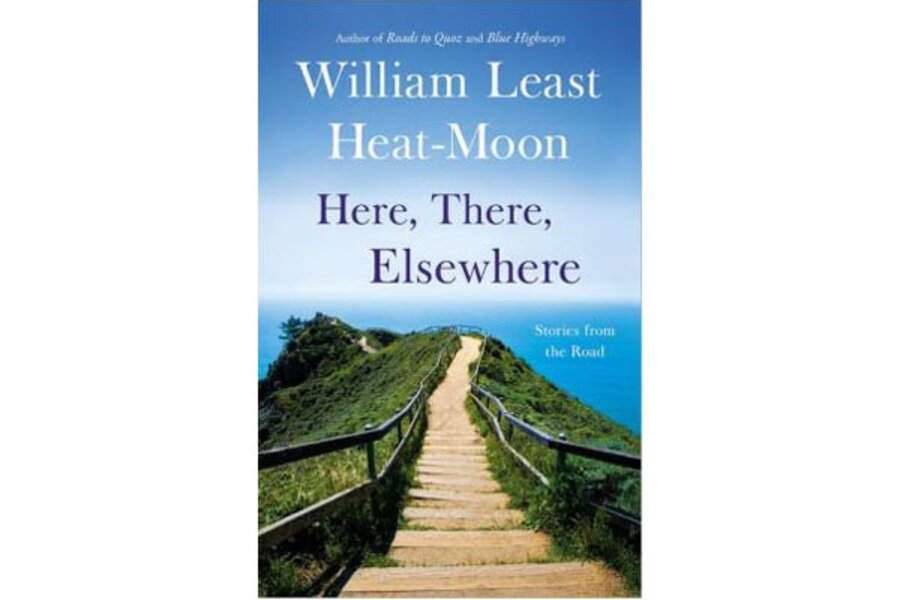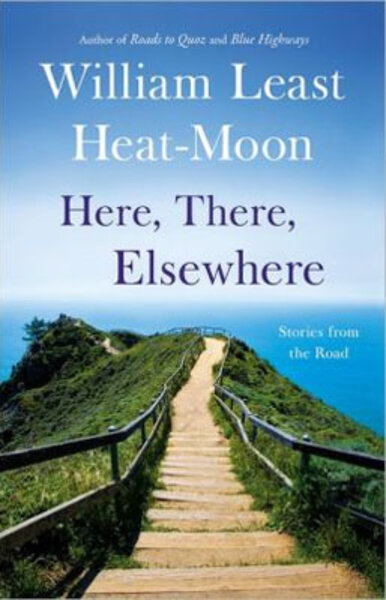Here, There, Elsewhere: Stories from the Road
Loading...
William Least Heat-Moon is an ambitious traveler, as evidenced by the triad of books for which he’s best known. He motored down America’s back roads in “Blue Highways,” footed it through a Kansas county in “PrairyErth,” and took to the water to cross the continent in “River-Horse.” The words “epic” and “quest” come to mind.
Billed as an unprecedented anthology of the author’s short-form travel writing, Here, There, Elsewhere: Stories from the Road brings together pieces published between 1983 and 2011, requiring of the reader no commitment to a prolonged quest but, rather, offering more easily consumed dips into various reaches of the world map framed by Least Heat-Moon’s interesting, atypical mind-set.
In one telling piece, the author frames his plan of attack for completing “PrairyErth,” and his strategy might be called the anti-“Eat, Pray, Love” approach (although it predated the bestseller by decades). His assertion that “a journey that exists primarily to express the soul of its traveler” is “a threat to good travel reporting today” is a foreshadowing of many of today’s “once was lost but now am found” first-person accounts of self-discovery.
Least Heat-Moon’s focus is not self, but place and its history. Take “Up Among the Roadside Gods,” a piece on the backcountry of Japan. The author and his interpreter, Tadashi, find out that they both have childhoods that began in the World War II era, and soon they are supping on homemade pickles and barley tea with farm families. But Least Heat-Moon then finds his way to what interests him more than the rural meals or populace – those aspects of place and history that make a locale simultaneously unique and universal. In this instance the trip’s icons are the Dosojin, Shinto roadside gods that dot the mountaintop. The granite carvings date back to the 17th century and are “made in the image of peasant realities” – they dance, kiss, and copulate; they stand looking outward, dressed in ordinary garb. Their constant presence links place to meaning, demonstrating “a capacity for deity – in the human.”
Not all of Least Heat-Moon’s musings get to this depth of profundity – the author talks about the courage needed to face black pudding on the far Scottish islands and memories evoked by his search for a particular genus of Lake Superior smoked fish. Had he so chosen, Least Heat-Moon could have established himself primarily as a food writer. In “Morning in Manarola,” he knocks back a bowl of potent olives, pasta with potatoes (a Ligurian specialty), and a pear-flavored dessert wine. The next day, it’s unexpectedly delectable anchovies after his morning espresso.
But the author has more in mind than conjuring up local flavor; in fact he eschews places that draw hungry tourists. Least Heat-Moon is at his finest when in often overlooked places – whether a void on his road map that is dirt-deviled southeast Oregon or the intimacies of topography surrounding his Missouri home. He likes to philosophize and has a rangy vocabulary (keep a dictionary at hand).
He also voices his faith that his readers will join him as members of the “Because It’s There Association of Not-Yet-Jaded Travelers.” He uses this term in “A Land for the Resolutely Curious,” which describes a float down the Gulf Intracoastal Waterway, replete with great swaths of nonscenery. Least Heat-Moon admits that even the most resolute might “hope for a passing tow, a sunken barge, a bridge, a noisy rise of ricebirds – anything to disrupt the purgatory of rectilinearity.” But he offers a wealth of reflection to be had in even the more barren of travel choices.
In the end it’s clear that a foray into “Here, There, Elsewhere,” like the mix of exotic jaunts and “more disregarded than discovered” places it chronicles, is worth the investment in time, a good dictionary, and open-mindedness. Long live the Resolutely Curious!









